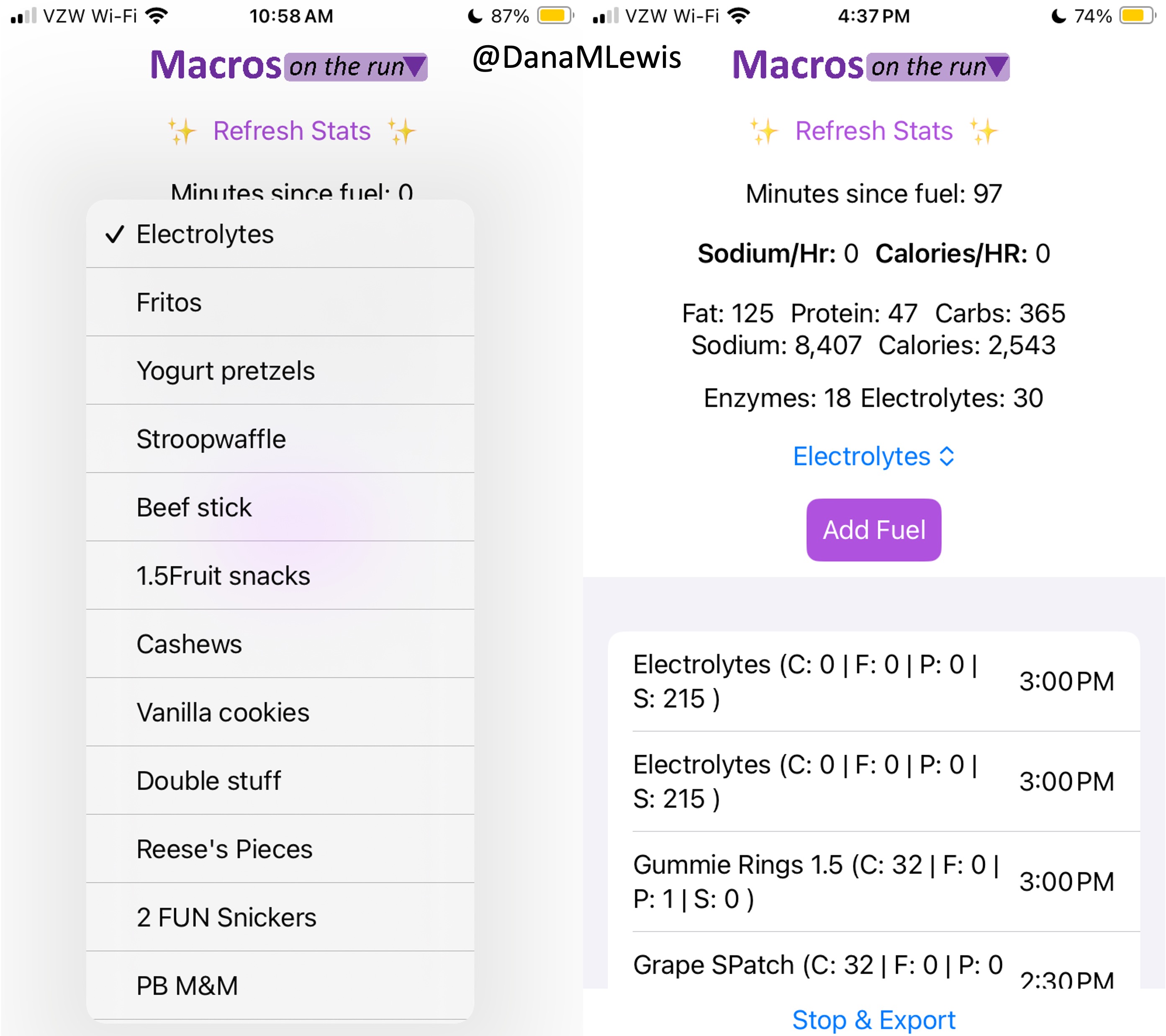Last year, I built a spreadsheet template (and shared it here) to use while training and running ultramarathons to track my fuel consumption. It was helpful for me, as a person with exocrine pancreatic insufficiency, to see and decide based on macronutrient counts for each snack how many enzyme pills I needed to take each time I fueled, which is every 30 minutes.
This year, I got tired of messing with the spreadsheet while running. I don’t mind the data entry, but because of the iterative calculations updating with the hourly and overall totals of carbs, sodium, calories per hour etc, the Google Sheet would get bogged down over time, especially when I was running for 16 hours (like during my 100k in March). That would cause the Google Sheets app to crash and reload, or kick me out of the sheet and require me to click back in, wait for it to catch up, before entering my fuel item. It only took a couple of seconds, but it was annoying to have that delay while I was running.
I thought about not logging my fueling while running, especially because I had switched to a slightly more expensive but also larger over-the-counter (OTC) enzyme pill that basically covers every single snack I take with one single pill. That requires less mid-run decision making about how many to take, so it’s less important during the run to see each snack’s composition: I simply swallow a pill each time I do fuel.
Yet, after 1-2 runs of 2-3 hours where I didn’t log my intake, I still found myself missing the data from the run. Although the primary use case of in-run decision making wasn’t there for enzyme dosing, the secondary use case of making sure I was consuming enough sodium per hour and calories per hour relative to my goals was still there. I still wanted to offload that hourly tracking so I didn’t have to remember how much I had had in the last hour. Plus, the post-run data summary was nice, because it helped me evaluate my fueling overall in the grand scheme of my daily nutritional intake, which is particularly helpful for me in making sure I’m consuming enough protein to match my ultra-running activities.
And, I had figured out last year how to develop iOS apps (check out PERT Pilot if you have EPI, and Carb Pilot if you’re someone who’d like to simply use AI to generate estimates of how many carbs or macronutrients are in what you’re eating) with the help of an LLM. So I decided to try to build a custom, just for me app to mimic my spreadsheet in order to easily track my fueling on the run.
Tada! I made MacrosOnTheRun.
It’s pretty simple: I open the app, hit ‘start run’, and then click the drop down and tap the fuel item (or electrolyte) that I’m consuming. I hit “add fuel”, and the items drops into the list on the screen and is added to the hourly and overall estimates shown above the drop down.

When I’m done with the run, I tap the “stop and export” button at the bottom, which opens the iOS share sheet and enables me to email the CSV file to myself, so I can copy/paste the data back into the same spreadsheet template I was using before. It’s useful because I have all my runs stored as individual tabs in the sheet, and the template (same one I was using last year) autopopulates the pivot table with hourly summaries so I can see across each hour whether I was meeting my sodium and fueling goals. (Check out the 27 hour summary table in my 100 mile recap if you’re curious to see an example!)
Right now, I haven’t bothered to add a feature to edit in-app what the fuel list is – mine is programmed in via the code of the app itself, since I’m the only one using it – and I haven’t published it to the iOS App Store because I didn’t think anyone else would want to use it.
But, if I’m wrong, and this is something you’d like to use – let me know by commenting here or emailing me (Dana+MacrosOnTheRun@OpenAPS.org) and letting me know. If there’s interest, I can modify the app to allow in-app fuel list entry and modifications of the fuel list and then share it via TestFlight or in the App Store for other people to download and use.